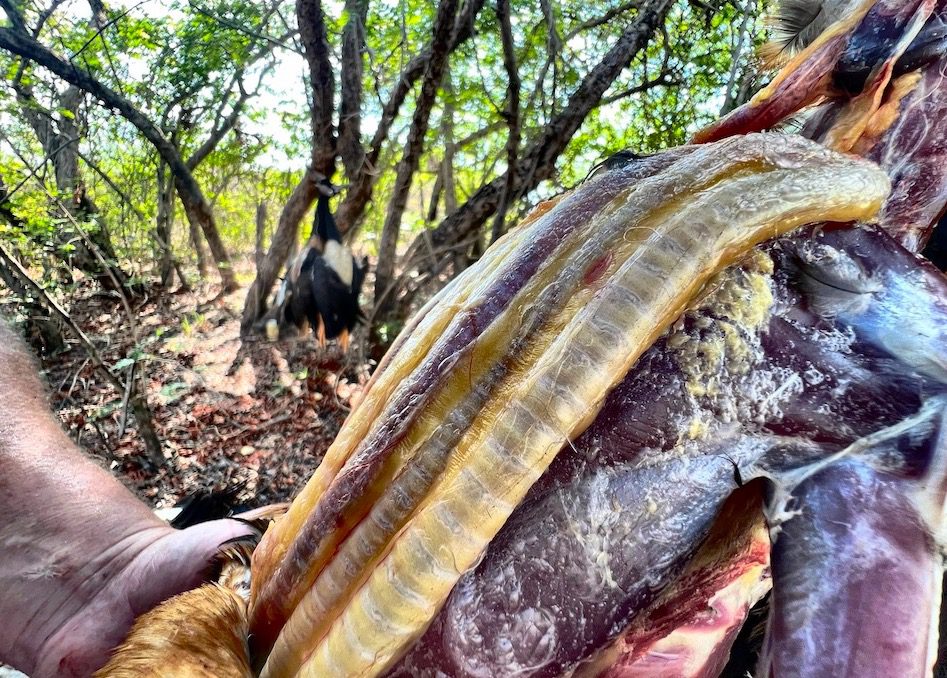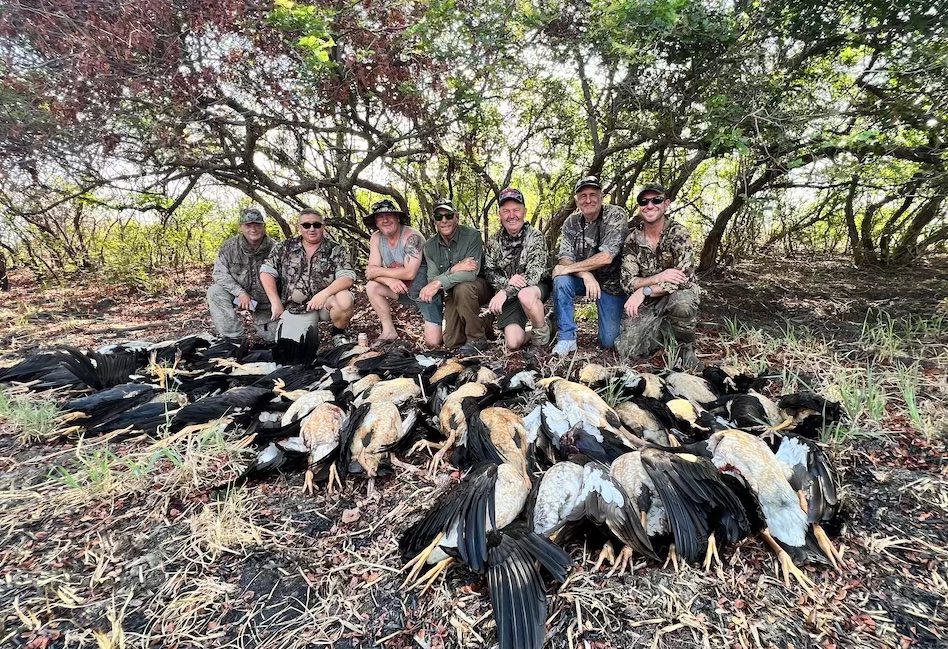Magpie Goose
The Magpie Goose (Anseranas semipalmata) is a distinctive waterfowl species inhabiting wetlands and floodplains across northern Australia, New Guinea, and parts of Indonesia. This unique goose displays several morphological and behavioral features that set it apart within the avian landscape. The magpie goose is a living fossil, a representation of chicken-like birds and steamers and waterfowl as they are presently known.

Magpie Geese are easily identifiable by their contrasting black and white plumage. Adult individuals exhibit a black neck, head, and upper breast, while the rest of the body is predominantly white. The long neck, coupled with a noticeable knob on the forehead, contributes to their striking appearance. A notable characteristic is the partially webbed, chicken-like feet, a feature shared with few other waterfowl species. Male magpie geese have about 4 feet of trachea wrapped like radiator coils between their breasts and skin. Though some have said this might be for thermoregulatory purposes, it most likely have vocalization functions.
These geese are highly adapted to wetland environments, including swamps, lagoons, and floodplains. Their range spans from the northern parts of Australia, through New Guinea, to northern and eastern Indonesia. Magpie Geese are particularly abundant in areas with extensive water sources, allowing them to exploit their specialized feeding habits.
Magpie Geese are herbivorous, primarily feeding on aquatic vegetation such as water lilies, sedges, and grasses. Their specialized bill is adapted for grazing on submerged vegetation, and they often forage in shallow, crocodile-infested waters.



Breeding typically occurs during the wet season. Magpie Geese construct large, elevated nests made of vegetation, often situated in trees or on floating platforms. A clutch of eggs is laid, and both parents contribute to incubation and care of the young goslings upon hatching.
These geese exhibit a highly social nature, often forming large flocks, especially during the non-breeding season. The social structure includes family groups, and their cohesive behavior is essential for navigation, feeding, and protection against predators. Males typically form binds and breed with 2 females annually.
Magpie geese have distinctively primitive 2-note honking calls, which play a crucial role in communication within the flock. These vocalizations serve various purposes, including signaling danger, coordinating movement, and maintaining social bonds.
MAGPIE GOOSE SPECIES PROFILE. An ancient ecological connection between chicken-like screamers and ducks-geese-swans as we know them, Australia’s magpie geese are living fossils. My use of the word “reptiles” is misleadingly exaggerated. Dinosaur is most appropriate. Size-wise, about the size of snow geese but with long, swan-like necks, wings, legs. Unique features: cranial protuberances that increase in size with age, partially webbed chicken-like feet. The males have FOUR FEET worth of trachea coiled like a snake on their breasts for vocalizations purposes. They pair with two females each breeding season.
Available Hunts
While the Magpie Goose population is currently stable, their dependence on specific wetland habitats makes them susceptible to habitat loss and degradation. Conservation efforts focus on preserving these crucial ecosystems and ensuring sustainable management practices to safeguard the species. Huge thanks to Field and Game Australia and to Australian hunters for putting their time and money into conserving waterfowl in perpetuity.
The magpie goose stands is a remarkable waterfowl species with its visually striking appearance, specialized adaptations, and intricate social behaviors. Understanding the ecological requirements of Magpie Geese is imperative for their conservation and the overall health of the wetland ecosystems they inhabit.
MAGPIE GOOSE, AN ANCIENT CONNECTION. Sweat dripping off cap bill like rain off a roof—hotter than hell—the sultry weather here in Australia’s northern territories is more Deep South summertime than duck season. You do things for bucket lists. Anything, anywhere. Magpie geese lifting off in distance, trading between feeds and water, faintly honking like canada goose precursors, flying over team @fallas_fowl_photos KFC-fueled shooting line. Nobody hunts over water here—too many man-eating saltwater crocs. Magpie geese are an ancient ecological connection between chicken-like screamers and ducks-geese-swans as we know them. Size-wise, about the size of snow geese with long, swan-like necks, wings, legs. Unique features: cranial protuberances that increase in size with age, partially webbed chicken-like feet, hooked bills that are rough like reptilian skin. The males have 4 feet worth of trachea coiled like a snake on their breasts for vocalizations purposes. They pair with two females during breeding season. Larger-sized pellets, tighter chokes and long-as-Cadillac lead brings them down. Excellent tablefare. When now asked the most interesting waterfowl ever hunted, here’s the answer. Many from this morning’s bag donated to non-hunting scientists that accompanied us, eager for educational and genetic materials before antis possibly close the season here.








